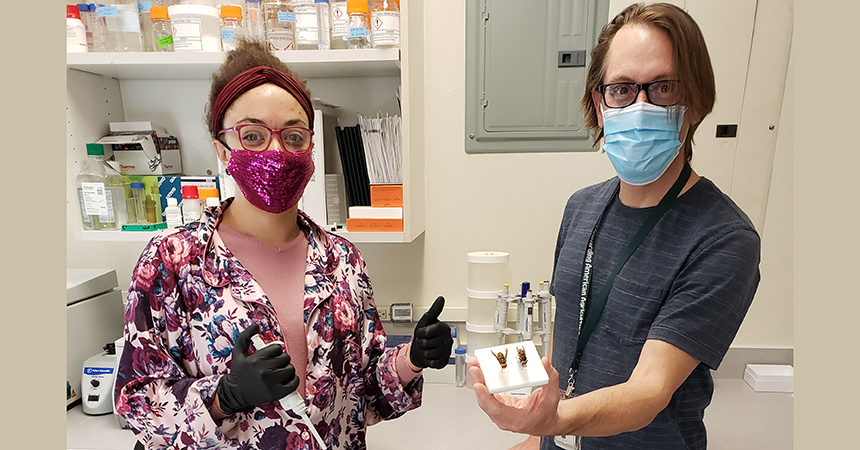
ITP’s molecular lab supports APHIS PPQ’s Asian giant hornet management effort
One of ITP's scientists was featured in a WIRED article from August about the Asian Giant Hornet (AGH), Vespa mandarinia. Todd Gilligan, who runs ITP’s Molecular Laboratory, is one of many people in APHIS who are contributing to USDA’s effort to eradicate this new invader. AGH poses a major threat to honeybees and other important pollinators, so USDA is exploring every possible method to help identify, track, and ultimately eliminate AGH from the US. These efforts include funding morphological identification support, as we mentioned in a previous article. But USDA is also working on molecular tools to help stop the spread of AGH. USDA Agricultural Research Service (ARS) coordinated sequencing of the complete AGH genome through their Ag100Pest initiative. Having the complete genome is essential for other molecular work, such as population-genomics studies to determine the source of AGH in North America. A better understanding of the potential sources of AGH not only assists with preventing future invasions, but also helps scientists to better assess risks of establishment and track potential nesting sites, as different populations of AGH in their home range have different habits and habitats. In fact, in October, by attaching radio trackers to hornets they had successfully trapped, entomologists with the Washington State Department of Agriculture found the first AGH nest in the U.S. in the cavity of a homeowner’s tree.
Read more about AGH and the tools the ITP Molecular Lab is helping to develop to support the eradication effort.